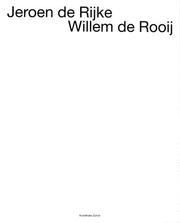| Listing 1 - 7 of 7 |
Sort by
|

ISBN: 3883754439 9783883754437 Year: 2000 Publisher: Braunschweig Kunstverein Braunschweig
Abstract | Keywords | Export | Availability | Bookmark
 Loading...
Loading...Choose an application
- Reference Manager
- EndNote
- RefWorks (Direct export to RefWorks)
Ader, Bas Jan --- Drawing --- motion pictures [visual works] --- video art --- installations [visual works] --- Photography --- Film --- drawing [image-making] --- photography [process] --- mythology [literary genre] --- Iconography --- Art --- Netherlands --- 7.07 --- Ader, Bas Jan (pseudoniem van Bastiaan Johan Christiaan Ader) 1942-1975 (°Winschoten, Nederland) --- Conceptuele kunst ; Bas Jan Ader --- Fotografie ; performances --- Kunstenaars met verschillende disciplines, niet traditioneel klasseerbare, conceptuele kunstenaars A - Z --- Ader, Bas Jan, --- Exhibitions --- dood
Book
ISBN: 3924039232 Year: 1994 Publisher: Mönchengladbach Städtisches Museum Abteiberg
Abstract | Keywords | Export | Availability | Bookmark
 Loading...
Loading...Choose an application
- Reference Manager
- EndNote
- RefWorks (Direct export to RefWorks)
assemblages [sculpture] --- art [fine art] --- multimedia works --- photography [process] --- Photography --- Art --- Muller, Christopher --- anno 1900-1999 --- Great Britain --- Germany --- art [discipline]
Book
ISBN: 9783981567311 Year: 2014 Publisher: Berlin Galerie Buchholz
Abstract | Keywords | Export | Availability | Bookmark
 Loading...
Loading...Choose an application
- Reference Manager
- EndNote
- RefWorks (Direct export to RefWorks)
Art --- installations [visual works] --- drawing [image-making] --- photography [process] --- sculpting --- 3-D printing --- Genzken, Isa

ISBN: 294027133X 9782940271337 Year: 2003 Publisher: Genève: JRP/Ringier,
Abstract | Keywords | Export | Availability | Bookmark
 Loading...
Loading...Choose an application
- Reference Manager
- EndNote
- RefWorks (Direct export to RefWorks)
Jeroen de Rijke (1970-2006) and Willem de Rooij (b. 1969) have worked together since 1994. Their work revolves around representation problems relating to artistic and media images, cultural-historical artefacts and socio-political forms. The two artists produce films and photographs, using the "beauty" of familiar compositional and formal principles and the tempting projection surface this provides for us. de Rijke/de Rooij's images are always disturbing because they usually concentrate on a single take, action or object; reduced image distillations intensify doubts over "the image", initiating a discourse about our culturally driven readings of phenomena, about how we use images and how they affect us.
Vidéo --- Vidéo art --- Photographie --- Installation-art --- Perception de l'espace --- Film --- de Rijke, Jeroen, 1970-2006 --- de Rooij, Willem, 1969 --- -Vidéo --- de Rooij, Willem, 1969-
Digital
Year: 2018 Publisher: Cambridge, Mass. National Bureau of Economic Research
Abstract | Keywords | Export | Availability | Bookmark
 Loading...
Loading...Choose an application
- Reference Manager
- EndNote
- RefWorks (Direct export to RefWorks)
In the first half of the twentieth century, the rate of death from infectious disease in the United States fell precipitously. Although this decline is well-known and well-documented, there is surprisingly little evidence about whether it took place uniformly across the regions of the U.S. We use data on infectious disease deaths from all reporting U.S. cities to describe regional patterns in the decline of urban infectious mortality from 1900 to 1948. We report three main results: First, urban infectious mortality was higher in the South in every year from 1900 to 1948. Second, infectious mortality declined later in southern cities than in cities in the other regions. Third, comparatively high infectious mortality in southern cities was driven primarily by extremely high infectious mortality among African Americans. From 1906 to 1920, African Americans in cities experienced a rate of death from infectious disease greater than what urban whites experienced during the 1918 flu pandemic.
Book
Year: 2018 Publisher: Cambridge, Mass. National Bureau of Economic Research
Abstract | Keywords | Export | Availability | Bookmark
 Loading...
Loading...Choose an application
- Reference Manager
- EndNote
- RefWorks (Direct export to RefWorks)
In the first half of the twentieth century, the rate of death from infectious disease in the United States fell precipitously. Although this decline is well-known and well-documented, there is surprisingly little evidence about whether it took place uniformly across the regions of the U.S. We use data on infectious disease deaths from all reporting U.S. cities to describe regional patterns in the decline of urban infectious mortality from 1900 to 1948. We report three main results: First, urban infectious mortality was higher in the South in every year from 1900 to 1948. Second, infectious mortality declined later in southern cities than in cities in the other regions. Third, comparatively high infectious mortality in southern cities was driven primarily by extremely high infectious mortality among African Americans. From 1906 to 1920, African Americans in cities experienced a rate of death from infectious disease greater than what urban whites experienced during the 1918 flu pandemic.
Book

ISBN: 3927452831 Year: 1995 Publisher: Köln : Salon Verlag & Edition Köln,
Abstract | Keywords | Export | Availability | Bookmark
 Loading...
Loading...Choose an application
- Reference Manager
- EndNote
- RefWorks (Direct export to RefWorks)
| Listing 1 - 7 of 7 |
Sort by
|

 Search
Search Feedback
Feedback About UniCat
About UniCat  Help
Help News
News